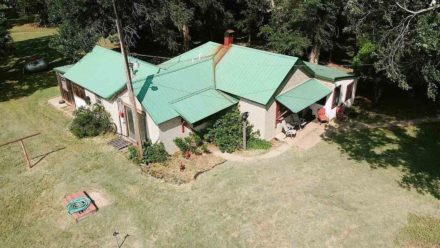Why Do We Go?
Many years ago, Ian, a ruby-cheeked and curly-haired young man, joined the voyage of a five-masted schooner. The great sailing vessel carried over 3,000 tons of food, clothing, farm implements, books, liquor, and lumber.
After one week at sea, at the end of a hard day, some crew members broke into the cargo of fine liquors and opened a case of scotch. After all, they were risking their lives to transport the stuff. Consuming one out of a hundred cases would surely be a reasonable gratuity for such perilous work. Soon they opened a dozen more cases.
As the trip wore on, the crew’s clothes grew foul and began to fall apart. That’s when someone discovered vast stores of new clothes. The men discussed the need; their slurred voices reasoned they had destroyed their clothes in the grueling, cold, wet work. So, of course, it was only right to take a small portion of the trousers, shirts, jackets, raincoats, and headgear. No one would expect them to do the heavy work in tattered and inadequate clothing.
Naturally, being sailors, the crew began grumbling about the food the first day. The meals were not only boring, they complained, but stale and maybe dangerous. This was serious; they wouldn’t live long on that slop. In desperation, the men broke through a partition to discover cases of the best cheeses, steaks, breads, jams, caviar, cakes, and other delicacies. One old sailor said it was better than the Queen Mary.
The Hangover
As the voyage rolled on, the accident rate increased. The sailors stumbled through the difficult and dangerous work. Some looked like they had suffered strokes. Food and drink stained their shirts. Sailors fell asleep on the rolling deck. One night, the pitching ship hurled two men into their ocean graves.
The cargo hold of food became a horror; its repulsive stench permeated every level of the ship. Rotten food and human bile turned the decks treacherous. The rats came. The sickbay remained full.
Five weeks after the journey began, green hills and a great harbor came into view. When Ian climbed the mast and pulled binoculars to his eyes, he saw trucks and horse-drawn wagons; dozens of all sizes filling the roads leading to the dock.
Peering through his binoculars, the young man suddenly understoodthe enormous and elegant chain of business. Many workers harvested or manufactured the cargo, others loaded it into ships, sailors wrestled it through the sea, dock workers received it, and stores and sales teams sold it throughout the new land.
It never belonged to the crew. They were all thieves.
A Larger Dream
When we view the great sweep of life as personal territory, we enter a very confined and suffocating existence.
But what if, like the crew of the schooner, “my” work really belongs to that great lineage of people I’ve never seen and will never know? What if I’m a steward of abundant provisions—received from and intended for places and people far beyond my own?
Will I deliver it or devour it?
Do you think it’s possible that the less you see your own interests, the more you see larger possibilities? Could losing sight of yourself be the first step into a large dream? Maybe that’s what Jesus meant when He said, “Whosoever saves his life shall lose it: and whosoever loses his life for my sake shall find it.”
Yes, I know the cargo ship’s crew risked their lives, and some died on the voyage. But, if they desired any portion of the great payload they worked so hard to deliver, they had to pay retail like anyone else. No discounts. No refunds. And those who sold it had no interest in their stories of the sea.
Life’s largest possibilities call us to live within a radical truth: We are not owners; we are trustees and managers of every arena of the life entrusted to us. Making life even more radical is the fact that we are delivering the great treasure to people we don’t know and may not like.
Does it matter that their Creator likes them? Is that enough reason to go to sea? Those may be life’s biggest questions.


